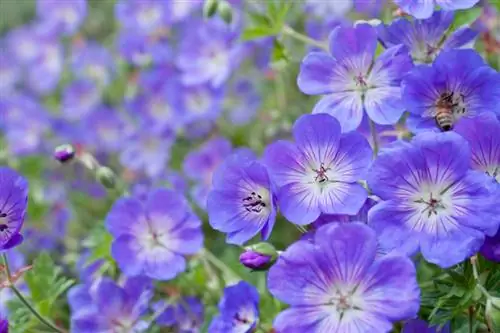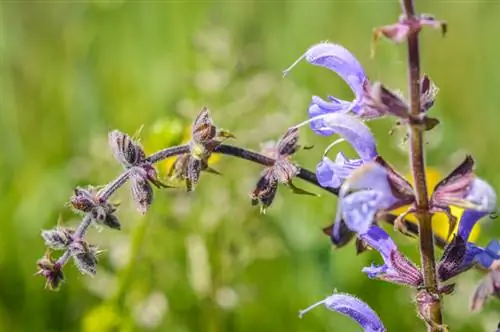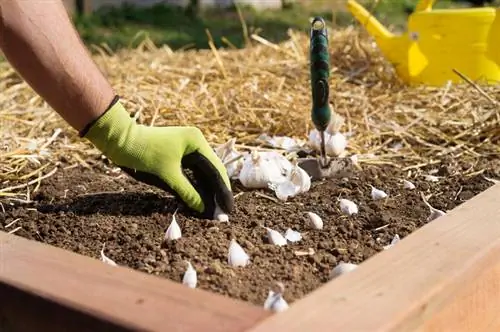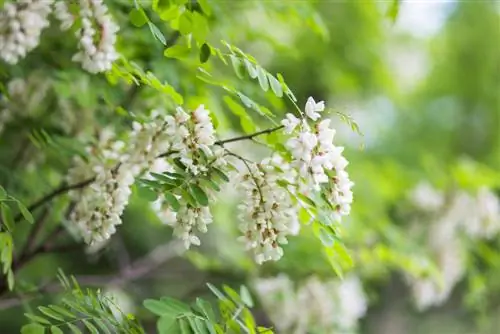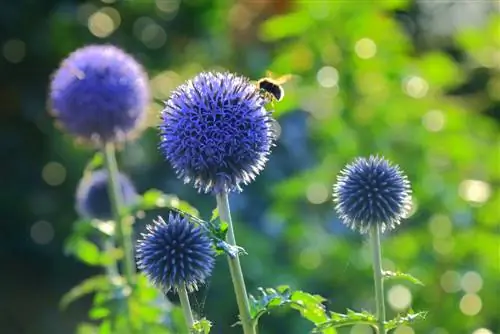- Author admin [email protected].
- Public 2023-12-16 16:46.
- Last modified 2025-06-01 06:02.
There are around 430 different species of cranesbills worldwide. Representatives of this species have even been found in the Arctic and Antarctic, while others thrive in the humid mountainous areas of tropical to subtropical regions - so hardly any other plant has such an extensive distribution area. Because of its delicate, but very brightly colored flowers, the cranesbill is often planted in ornamental gardens.
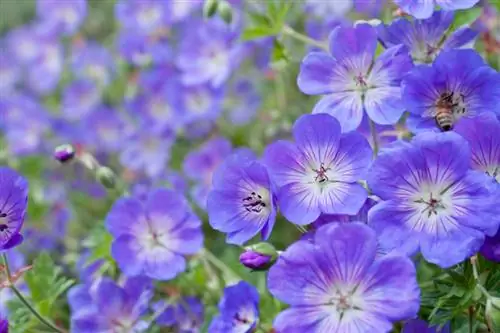
What are the basic characteristics of the cranesbill?
The cranesbill (Geranium) is a plant species widespread worldwide with around 430 different species. The colorful, cup-shaped to plate-shaped flowers and the usually five-part, notched leaves are characteristic. They thrive in different locations, but usually prefer sunny to partially shaded places and loamy, humus-rich soils.
Facts and data about the cranesbill at a glance
- Botanical name: Geranium
- Family: Geraniaceae
- Distribution: worldwide v. a. in cool, temperate climates
- Location: depending on the species, sunny to shady on loamy-humus soils
- Growth habit: herbaceous, mostly bushy, some species also creeping
- Perennial: perennial
- Height: depending on the species between 15 and 80 centimeters
- Flowers: bowl-shaped, wheel-shaped or plate-shaped
- Colors: blue, violet, pink, magenta or white in different shades
- Flowering time: depending on the species, usually between June and July
- Fruits: Split Fruit
- Leaves: usually five-part and notched
- Propagation: depending on the species by seeds, cuttings or division
- Winter hardiness: yes
- Poisonousness: no, some species are even edible
- Use: ornamental plant
Sunny to partially shaded location preferred
The different preferences of different types of cranesbills regarding their location can be explained by their no less different origins. Although most cranesbills prefer a sunny to partially shaded location, there are also some shade-tolerant species. There are also differences in terms of soil conditions: While some cranesbills need moist to moderately moist substrates, others should be planted in rather dry soil. However, the cross-species preference for permeable, loamy, humus-rich soils is relatively the same.
Cultivating cranesbills in the garden
Most cranesbills are very easy to care for and - provided their individual location requirements can be met - can be easily planted in many gardens. Due to their simplicity, they are also ideal for growing in containers on balconies and terraces. Depending on the species and variety, cranesbills are suitable for planting in colorful borders as well as as ground cover, for example in rockeries or under trees.
Tip
Contrary to what some gardeners believe, the cranesbill is by no means poisonous. Quite the opposite, because some species are even edible - like the native Ruprechtskraut.

